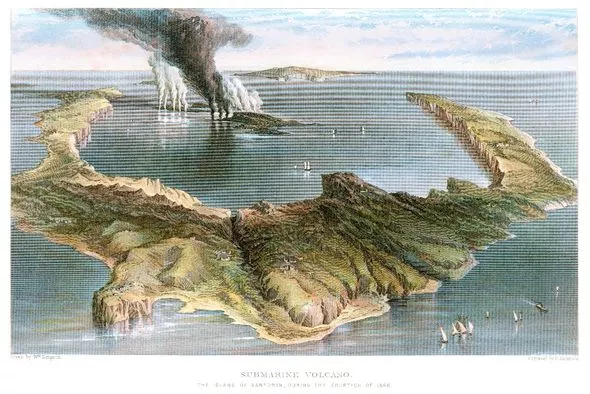Archaeology breakthrough: 3,600-year-old ‘time capsule’ exposes ancient disaster
The time capsule was preserved by the volcanic eruption of Santorini that rocked the Mediterranean and changed the course of history. It now may be the first instance of physical remains unearthed from among one of the tens of thousands of people who likely perished.
The international team of researchers published their findings in the Proceedings of the National Academy of Sciences.
In it, they presented evidence of a catastrophic tsunami that followed the eruption of Thera, in modern Santorini, a volcanic island in the Aegean Sea, some 3,600 years ago.
The volcanic eruption of Santorini is still regarded as one of the most devastating eruptions in human history.
It was rated at a seven or an eight on the volcanic explosivity index, which marks it as a “super-colossal” explosion that only occurs once in thousands of years.


Volcanoes of this size have smoke plums to reach 25 kilometres in height and spread over hundreds of kilometres.
Some researchers have compared the volcano to the detonation of millions of Hiroshima-type atomic bombs.
Scholars also believe that the traumatic memory caused by this eruption may also be responsible for many of humanities’ myths and legends.
They believe that the Bronze age ever, occurring in 1600 BC, could be seen in Plato’s allegory of the sunken city of Atlantis, which was composed more than a thousand years later.

The devastation of the event has also been linked to the biblical Ten Plagues, as volcanic eruptions frequently cause hailstorms, unending darkness, and moist atmospheres well suited for locusts.
The researchers have been excavating at the archaeological site of Çesme-Bağlararası, which is located in the popular resort town of Çesme on Turkey’s Aegean coast and more than 100 miles north-northeast of Santorini.
Archaeologists have been digging in the area since 2009 at a site that appeared to be a thriving coastal settlement that occupied almost continuously from the mid-third millennium to the 13th century BC.
Aside from some well-preserved buildings and roads that were previously uncovered, the researchers found a lot of artefacts that were in a pretty damaged shape.





